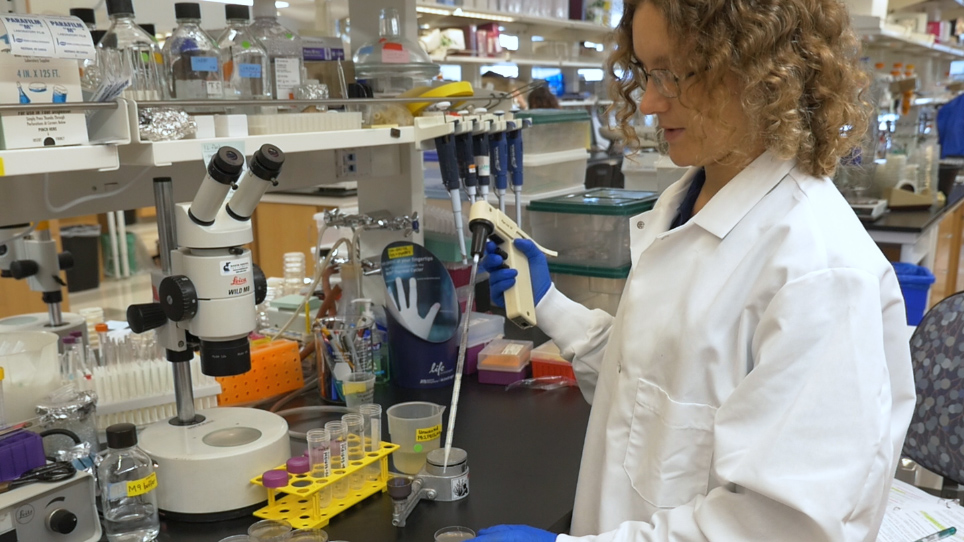Enriching for Males: Maintaining a Stock of Male C. elegans
成績單
– C. elegans occur in two sexes: hermaphrodites, which have two X chromosomes, and males, which have only one X chromosome referred 到 as XO or X null.
Hermaphrodites produce both oocytes and sperm and can reproduce by self- fertilization. Nearly all of their gametes carry an X chromosome, so offspring that result from self- fertilization are mostly hermaphrodites.
Rarely, the X chromosome is lost during gametogenesis, resulting in male offspring only about 0.1 到 0.2% of the time. This is not a practical way 到 collect enough males for any experiment or genetic cross that we need them for.
Instead, we can make a hermaphrodite with a male resulting in about half the offspring being male. When carrying out this genetic cross, be sure 到 include more males than hermaphrodites 到 ensure efficient mating. In the following example, we will set up a mating plate and isolate male worms in preparation 到 collect and study spermatids in vitro.
– First, obtain a large number of males by crossing five wildtype males and one hermaphrodite on a small lawn of E. coli OP50 bacteria seeded at the center of a nematode growth medium or NGM plate. Roughly 50% of the next generation will be wildtype males.
To collect L4 stage males, examine developmental stage and tail morphology under a dissecting microscope. An L4 stage worm is picked based on tail morphology. A male worm has a rounded tail, while a hermaphrodite has a pointed tail.
Using a platinum wire, pick 7 到 10 L4 stage males per experiment and transfer them 到 NGM plate seeded with OP50 and let them grow for a day or two. Growing celibate males in the absence of hermaphrodites prevents the loss of sperm and thus, a large number of spermatids will be available during the experimental procedure.



